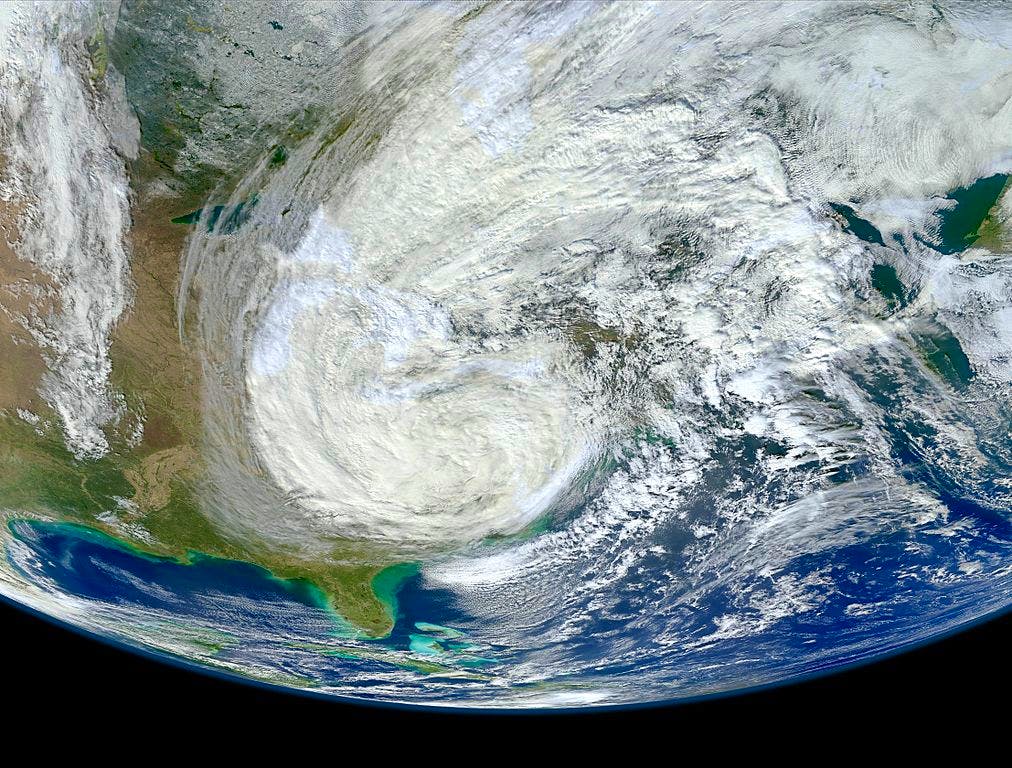It’s hard to believe it’s been a whole year since Hurricane Sandy swept up the northeast coast of the United States, costing billions in damages and, tragically, taking 55 lives. Coastal communities in New York and New Jersey were devastated and a number of coastal national wildlife refuges were flooded and badly damaged, littered with debris. Many areas are still recovering, even now.
As 2013 approached, a question loomed: would the Obama administration step up and face the issue of climate change storm impacts head-on? Well, although effectively responding to climate change will be a long-term process, , this past year the federal government has indeed taken a number of important steps in the right direction. Here’s a recap.
The Sandy Relief Bill: In a rare moment of bipartisan cooperation, Congress quickly passed a $50.4 billion emergency bill to fund Hurricane Sandy relief efforts. It included an unprecedented appropriation providing $360 million to Department of the Interior programs to “increase the resiliency and capacity of coastal habitat and infrastructure to withstand future storms and reduce the amount of damage caused by such storms.” In other words, it funded habitat restoration work that could help reduce the impact of future hurricanes, benefiting wildlife, people, and communities. (See below for an update on this!)
The State of the Union: Many conservation groups wondered if climate change would be addressed in President Obama’s State of the Union speech. He did: the president pledged to take action, saying “we can choose to believe that Superstorm Sandy, and the most severe drought in decades, and the worst wildfires some states have ever seen were all just a freak coincidence. Or we can choose to believe in the overwhelming judgment of science and act before it’s too late.” He went on to say he would take “executive actions…to reduce pollution, prepare our communities for the consequences of climate change and speed the transition to more sustainable sources of energy.”
A National Strategy: Soon to follow was the March release of the National Fish, Wildlife and Plants Climate Adaptation Strategy, a set of guidelines for restoring wildlife habitat and improving its resilience in the face of climate change. The strategy was created through the collaboration of state, federal and tribal organizations and provides in-depth analysis of climate change-related conservation problems. But it doesn’t stop at analysis: it also features practical solutions that confront climate change head-on. It’s an unprecedented step towards taking action in a warming world, and mirrors Defenders’ own climate adaptation vision. In fact, Defenders of Wildlife played an instrumental role in the development and release of this national wildlife adaptation plan, securing Congressional direction on the preparation of the strategy and engaging the administration throughout its development.
Climate Advisory Committee: Defenders’ own climate expert Noah Matson [c1] was chosen to be part of the new Department of the Interior Advisory Committee on Climate Change Science. The committee was created to identify key components of effective climate adaptation science strategy, and will advise the Department of the Interior on the activities of the new National Climate Change and Wildlife Science Center and eight regional centers across the U.S. We will see the committee’s findings in the years ahead-and how the Interior utilizes them.
The Climate Action Plan: In June, President Obama unveiled his new Climate Action Plan in a speech at Georgetown University[c2] . The president recognized that “ecosystems are critical to our nation’s economy and the lives and health of our citizens,” and that “these natural resources can also help ameliorate the impacts of climate change, if they are properly protected.” Building on the National Fish, Wildlife and Plants Adaptation Strategy, the president said he was “directing federal agencies to identify and evaluate additional approaches to improve our natural defenses against extreme weather, protect biodiversity and conserve natural resources in the face of a changing climate.” This statement was huge: yet another sign the Obama administration takes climate adaptation seriously and is moving to implement it.
EPA Regulations: Defenders and other groups waited to see what President Obama’s plan would look like, and what changes it would entail. In September, we saw one of the first climate change-fighting actions under the plan with the announcement: the EPA proposed unprecedented new regulations for newly built coal-fired power plants, requiring them to capture or store 40 percent of their carbon emissions to help combat climate change. It was yet another major step towards comprehensive climate change policy throughout the federal government.
Department of the Interior Sandy restoration work: Just last week, the Department of the Interior announced that it is investing $162 million of Hurricane Sandy relief money in projects to better protect coastal communities through habitat restoration work. In a statement, Sally Jewell said that “our public lands are often the best defense against Mother Nature,” and even said that “by stabilizing marshes and beaches, restoring wetlands, and improving the resiliency of coastal areas…we can provide an effective buffer that protects local communities from powerful storm surges and devastating floods when a storm like Sandy hits.” This is exactly the kind of restoration and adaptation work we need.
So what lies ahead for climate change policy in the United States? It’s clear that Hurricane Sandy and other climate impacts in 2012 helped spur the Obama administration to take action in 2013. What will the next year bring? Stay tuned for Jamie Rappaport Clark’s blog later this week, which covers what we need to see in 2014 if we are to continue on the path towards an effective climate change response.
Haley McKey is a communications associate at Defenders of wildlife




